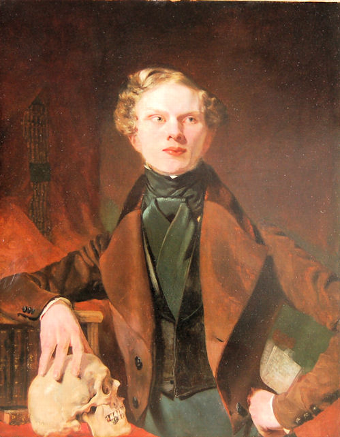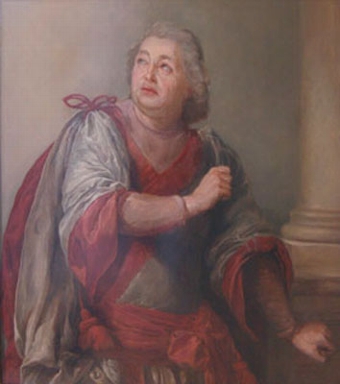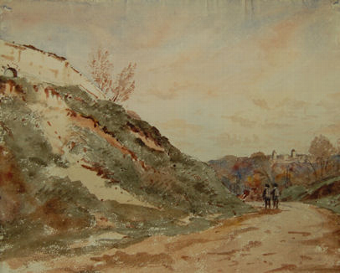The tale of Punch and Judy varies from puppeteer to puppeteer and has changed over time, but the outline of early 19th-century shows is usually still recognizable. It typically involves Punch behaving outrageously, struggling with his wife Judy and the Baby, and then triumphing in a series of encounters with the forces of law and order (and often the supernatural). The classic ending of the show has him upending the Devil himself, exclaiming "Huzzah huzzah, I''ve killed the Devil!".
All is performed in the spirit of outrageous comedy and is intended to provoke shocked laughter. Whilst the Victorian version of the show drew on the morality of its day, The Punch & Judy College of Professors considers that the 20th- and 21st-century versions of the tale have evolved into something more akin to a primitive version of The Simpsons in which a bizarre family is used as vehicle for grotesque visual comedy and a sideways look at contemporary society. ? In my opinion the street Punch is one of those extravagant reliefs from the realities of life which would lose its hold upon the people if it were made moral and instructive. I regard it as quite harmless in its influence, and as an outrageous joke which no one in existence would think of regarding as an incentive to any kind of action or as a model for any kind of conduct... ?
?Charles Dickens, The Letters of Charles Dickens Vol V, 1847 ? 1849
The Punch and Judy show can trace its roots to the 16th-century Italian commedia dell''arte. The figure of Punch derives from the Neapolitan stock character of Pulcinella, which was Anglicized to Punchinello. He is a manifestation of the Lord of Misrule and Trickster figures of deep-rooted mythologies. Punch''s wife was originally "Joan". May 9 1662 - the date on which the figure who later became Mr Punch made his first recorded appearance in England - is traditionally reckoned by "professors" as Punch''s UK birthday. The diarist Samuel Pepys observed a marionette show featuring an early version of the Punch character in Covent Garden in London. It was performed by an Italian puppet showman, Pietro Gimonde (aka "Signor Bologna"). Pepys described the event in his diary as "an Italian puppet play, that is within the rails there, which is very pretty." In the British Punch and Judy show, Punch wears a jester''s motley and is a hunchback whose hooked nose almost meets his curved jutting chin. He carries a stick, as large as himself, which he freely uses upon all the other characters in the show. He speaks in a distinctive squawking voice, produced by a contrivance known as a swazzle or swatchel which the professor holds in his mouth, transmitting his gleeful cackle? "That''s the way to do it". So important is Mr Punch''s signature sound that it is a matter of some controversy within Punch and Judy circles as to whether a "non-swazzled" show can be considered a true Punch and Judy Show.
Many regional variants of Pulcinella were developed as the character spread across Europe, first as a marionette, then as a glove-puppet. In Germany, Punch is called Kasperle or Kaspar while Judy is "Grete". In the Netherlands he is Jan Klaassen (and Judy is Katrijn); in Denmark Mester Jackel; in Russia Petrushka; in Romania Vasilache; and in France he has been called Polichinelle since the mid-1600s. A specific version appeared in Lyon in the early 19th century under the name "Guignol"; it soon became a conservatory of Lyon popular language.
In the early 18th century, the marionette theatre starring Punch was at its height, showman Martin Powell attracting sizeable crowds at both Covent Garden and Bath, Somerset. In 1721 a puppet theatre that would run for decades opened in Dublin. The cross-dressing actress Charlotte Charke ran the successful but short-lived Punch''s Theatre in the Old Tennis Court at St. James''s, Westminster, presenting adaptations of Shakespeare as well as plays by herself, her father Colley Cibber, and her friend Henry Fielding. Fielding eventually ran his own puppet theatre under the pseudonym Madame de la Nash to avoid the censorship concomitant with the theatre Licensing Act of 1737.
Punch was extremely popular in Paris, and, by the end of the 18th century, he was also playing in England''s American colonies, where even George Washington bought tickets for a show. However, marionette productions, presented in empty halls, the back rooms of taverns, or within large tents at England''s yearly agricultural events at Bartholomew Fair and Mayfair, were expensive and cumbersome to mount and transport. In the latter half of the 18th century, marionette companies began to give way to glove-puppet shows, performed from within a narrow, lightweight booth by one puppeteer, usually with an assistant "bottler" to collect their earnings from a crowd the "bottler" had likewise been obliged to gather. These shows might travel through country towns or move from corner to corner along busy London streets, giving many performances in a single day. The character of Punch adapted to the new format, going from a stringed comedian who might say outrageous things to a more aggressive glove-puppet who could do outrageous, and often violent, things, to the other wooden-headed members of his cast. About this time Punch''s wife went from "Joan" to "Judy." A Punch and Judy show attracts a family audienceThe mobile booth of the late 18th- and early 19th-century Punch and Judy glove-puppet show was originally covered in checked bed ticking or whatever inexpensive cloth might come to hand. Later Victorian booths, particularly those used for Christmas parties and other indoor performances, were gaudier affairs. In the 20th century, however, red-and-white striped puppet booths became iconic features on the beaches of many English seaside resorts; such striped cloth is the most common covering today, wherever the show might be performed.
A more substantial change came over time to the show''s target audience. Originally intended for adults, the show evolved into primarily a children''s entertainment in the late Victorian era. Ancient members of the show''s cast, like the devil and Punch''s mistress Pretty Polly, ceased to be included when they came to be seen as inappropriate for young audiences. The term "pleased as Punch" is derived from Punch and Judy; specifically, Mr. Punch''s characteristic sense of gleeful self-satisfaction.
Modern British performances of Punch and Judy are no longer exclusively the traditional seaside children''s entertainments they became in summer holiday resorts. They can now be seen at carnivals, festivals, birthday parties, and other celebratory occasions. With Punch and Judy, the characters usually include their baby, a hungry crocodile, Joey the Clown (a friend of Mr Punch), an officious policeman, and a prop string of sausages. The devil and the generic hangman Jack Ketch may still make their appearances but, if so, Punch will always get the better of them. The story changes, but some phrases remain the same for decades or even centuries: for example, Punch, after dispatching his foes each in turn, still squeaks his famous catchphrase "That''s the way to do it!!" While censorious political correctness threatened Punch and Judy performances in the UK and other English speaking countries for a time, the show is having one of its cyclical recurrences and can now be seen not only in England, Wales, and Ireland, but also in Canada, the United States (including Puerto Rico) and even Australia and South Africa. The characters in a Punch and Judy Show are not fixed as in a Shakespeare play. They are similar to the cast of a soap opera or a folk tale like Robin Hood. Whilst the principal characters must appear, the lesser characters are included at the discretion of the performer. New characters may be added as the tradition evolves, and older characters dropped.
The cast of a typical Punch and Judy show today will include:
Mr. Punch
Judy
The Baby
The Clown (a.k.a. Joey)
The Crocodile
The Ghost
The Doctor
The Devil (a.k.a. OId Nick)
Characters once regular but now occasional include:
Toby the Dog
Hector the Horse
The Beadle
The Hangman (a.k.a. Jack Ketch)
Pretty Polly
Characters only seen in a historical re-enactment performance include:
Mr. Scaramouche (Toby''s owner)
The Constable
The Servant (a.k.a. Jim Crow)
The Blind Man
Other characters included Boxers, Chinese Plate Spinners, topical figures, a trick puppet with an extending neck (the "Courtier") and a monkey. Most "professors" could not afford a second performer, so they employed a live dog ("Toby") who normally sat on the platform in front of the booth. Toby wore the conventional collar ruff and hat. He would pick up a small bag, attached to a handle held in his teeth, and run through the crowd. Kids would put coins in the bag. This way, the professor never had to leave the booth.
Antiques.co.uk Ref: CCXYY5CY
- Materials:
- Oil on Canvas
- Width (cm):
- 24.00 x 30.00 cm 9.45 x 13.78 ins












